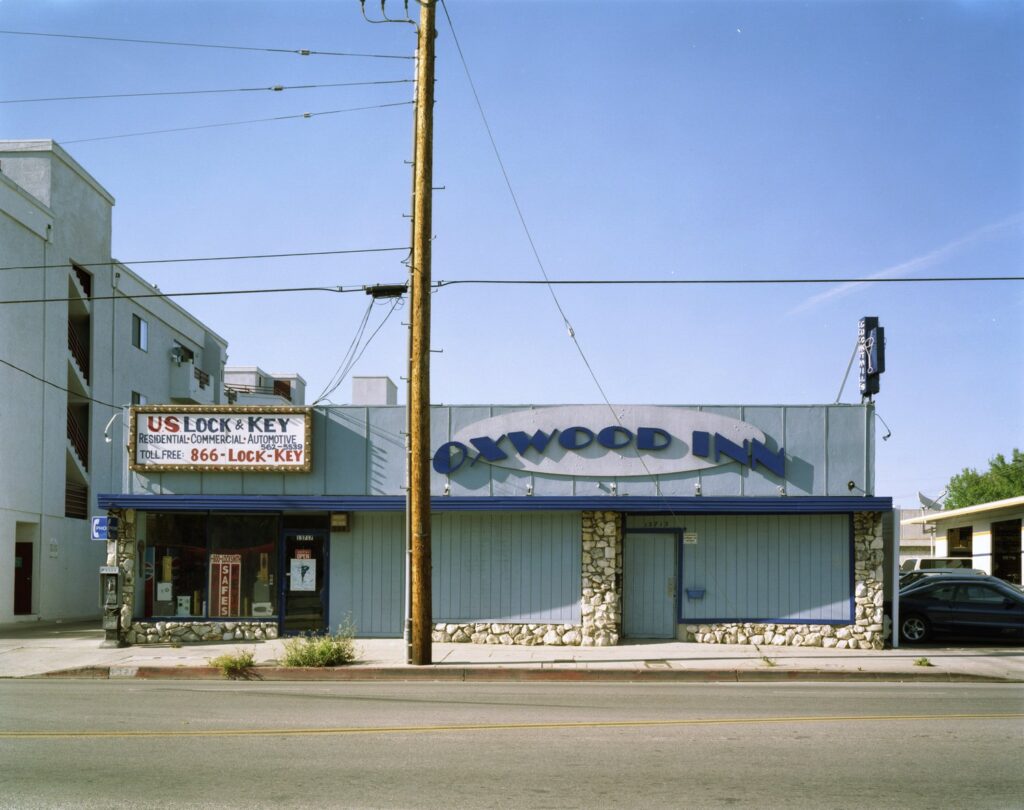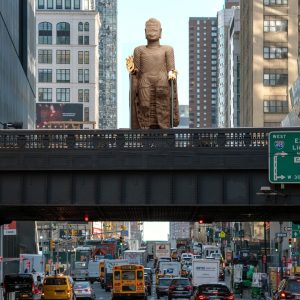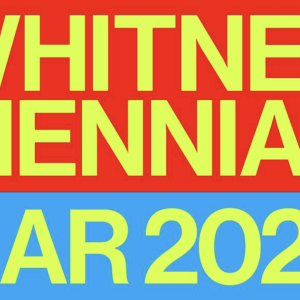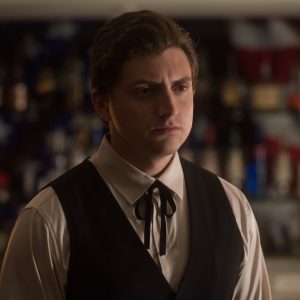San Francisco is a city synonymous with diversity, counterculture, and the gay rights movement. But as artist and Photo and Media faculty Kaucylia Brooke learned, by 1995, there were no longer any seven-day-a-week lesbian bars in the city. Yes, there were spaces that held lesbian happy hours or dedicated nights, but there were no standalone bars left for gay women.
Born from that absence was The Boy Mechanic, Brooke’s ongoing project that documents the history of lesbian bars in a number of cities and towns, including San Diego, San Francisco, Oakland, and Los Angeles, as well as Cologne in Germany.
She began The Boy Mechanic in 1996 as a commission from the Museum of Photographic Arts in San Diego for the exhibition Re: Public; Listening to San Diego. Brooke conducted videotaped interviews with San Diego lesbian bar patrons who took her to current and former sites of the bars, resulting in a 30-minute video of lesbian bar history.
The social history project has had several exhibitions and iterations, from a three-channel video installation at the Landesmusuem Joanneum in Graz, Austria, to a wall-sized chalkboard drawing of a map of LA annotated with bar site photos and text at the Los Angeles Municipal Art Gallery in Barnsdall Park.

“I realized an archive of disappearing spaces was important,” said Brooke during a recent phone interview. She added that she was drawn to documenting “how people can invent themselves and create a safe space.”
The Boy Mechanic is reminiscent of projects that document the lost and existing places from The Green Book, which guided Black travelers to safe spaces—hotels, restaurants, gas stations—during the Jim Crow Era of the early-to-mid 20th century.
In an interview with the digital art journal East of Borneo published in August, Brooke discusses in detail the origins of the project and why she continues to work with gay and lesbian archives to find addresses of now-defunct bars—from an artistic viewpoint—after nearly three decades.
She explains:
I was thinking about gender and space and gendered architecture. In particular, I was drawn to preexisting vernacular architecture that had been re-purposed for lesbian bars. Lesbian bars were often in spaces seemingly devoid of architectural beauty or historical importance. I made these meticulously composed, large-format and large-scale photographs of lesbian bars and the former sites of lesbian bars to elevate them to a status of monumentality, presenting them as edifices of profound historical significance, akin to revered governmental buildings, architectural masterpieces, or the preserved homes of literary luminaries. Through this visual treatment, I want these once-overlooked spaces to be recontextualized as vital landmarks, demanding the same reverence afforded to traditionally recognized historical sites.
During the course of the project, Brooke has found that each city’s character, architecture, and landscape helps determine the final works, which have included photographs, images, and maps. “In San Diego, you have this big blue sky and separate buildings. In Los Angeles, there are much wider streets with all the facades connecting,” she noted in East of Borneo. “Cologne is a post-WWII vertical city, so it looks different from San Diego and Los Angeles. San Francisco is also a vertical city but still retains many Victorian facades.”

Los Angeles had its own particular challenges when documenting building facades or even empty lots, located on busy streets with traffic and cars zooming by. (Angelenos can get annoyed easily when their commutes are interrupted.) Brooke recalled her assistant Christie Williams shooting video from her SUV’s moonroof as they drove past LA locations. Their work garnered a lot of attention: “We had a lot of reactions from people on the street, mostly from men who flipped us off or waved at us. One guy even mooned us. That encapsulated my experience of Los Angeles.”
A faculty member of the Program in Photo and Media since 1992, Brooke’s multidisciplinary practice addresses the politics of cultural production and sexual representation. The Boy Mechanic takes its name from a Popular Mechanics’ book series, in which men and boys were instructed on how to fix and build things. Women, of course, were left out of the frame. Brooke’s series plays on that erasure as well as the perception of lesbian gender and identity.
Read the entire conversation “When The Lights Go Out: Kaucyila Brooke on the Disappearance of Lesbian Bars” at East of Borneo.
Fun fact: East of Borneo mentions that the only seven-days-a-week lesbian bar currently in LA is The Ruby Fruit, a Silver Lake wine bar. The bar was co-founded by CalArts alum Mara Herbkersman (Theater BFA 08) and Emily Bielagus in 2023.



